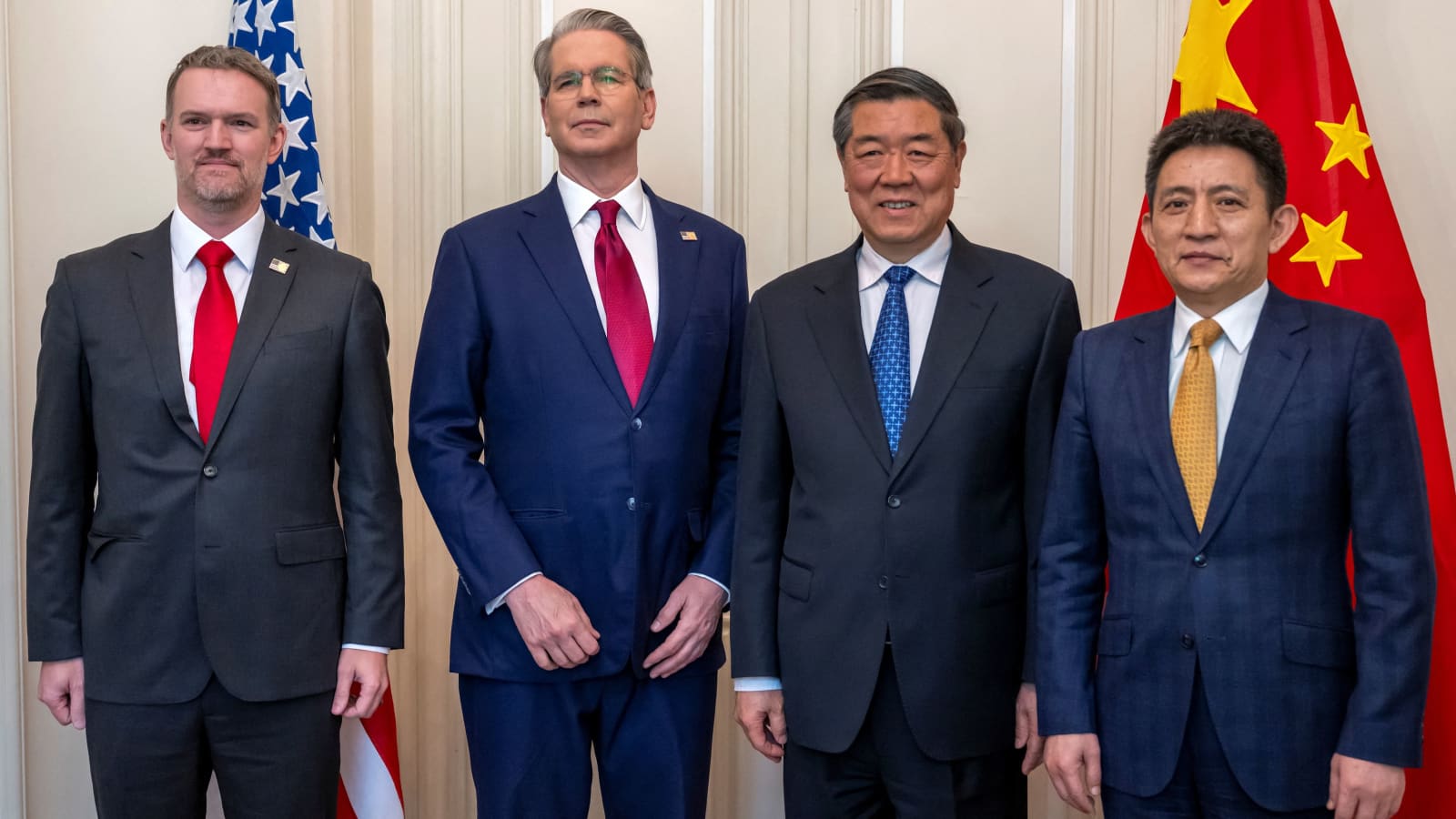High-Stakes Economic Summit in London
Officials from the United States and China convened in London for a critical second round of economic discussions, aiming to resolve escalating tensions over tariffs and supply chain disruptions that have threatened the fragile trade relationship between the world’s two largest economies.
The American delegation brought their A-team to the negotiating table: Treasury Secretary Scott Bessent, Commerce Secretary Howard Lutnick, and Trade Representative Jamieson Greer. China countered with Vice Premier He Lifeng, their economic policy heavyweight who previously led negotiations in Switzerland. These talks, scheduled to run through Tuesday, represent a crucial moment for global economic stability.
Legal Challenges Complicate Negotiations
The timing of these discussions couldn’t be more delicate. In April, the United States had paused certain tariffs imposed during the Trump administration to create breathing room for negotiations. However, a U.S. trade court threw a curveball in late May, declaring these tariffs illegal – though they remain in effect pending appeal.
This legal limbo creates an interesting paradox for negotiators. The Trump administration now faces a federal appeals court deadline to justify why these tariffs should continue, potentially weakening their negotiating position while simultaneously trying to secure broader market access agreements.
Supply Chain Disruptions Impact Global Economy
The ongoing trade tensions have created ripple effects throughout global supply chains, contributing to economic uncertainty that affects everything from smartphone production to agricultural exports. The complexity of modern international trade means that disruptions between these economic giants don’t stay contained.
Supply chain experts describe the current situation as particularly challenging because businesses require predictability to make long-term investment decisions. When tariff policies remain uncertain, companies hesitate to commit to major manufacturing or sourcing agreements, creating a cascade effect that slows economic growth.
Chinese Export Numbers Tell the Story
The numbers don’t lie, and they’re telling a compelling story about the trade war’s impact. China reported that shipments to the United States fell more than 34 percent in May compared to the previous year – the steepest decline since 2020. This dramatic drop illustrates how trade policies directly translate into real-world economic consequences.
This sharp decline in exports may have motivated Beijing’s willingness to return to the negotiating table. When your biggest customer suddenly reduces orders by over a third, even the world’s second-largest economy takes notice.
Strategic Objectives and Market Access
The Trump administration enters these talks with a complex agenda: securing greater market access for American businesses in China, encouraging Beijing to purchase more American products, and attracting Chinese investment for domestic manufacturing facilities. Simultaneously, they aim to establish permanent tariffs on certain goods to prevent what they characterize as unfair flooding of American markets with Chinese manufactured products.
These objectives reflect a broader strategy to rebalance trade relationships while protecting domestic industries. The challenge lies in achieving these goals without triggering retaliatory measures that could further disrupt global economic stability.
Global Economic Implications
The outcome of these London discussions extends far beyond bilateral trade statistics. International markets, multinational corporations, and consumers worldwide are watching these negotiations closely because the decisions made will influence everything from product pricing to employment levels across multiple industries and countries.
Economic analysts emphasize that successful resolution of these trade tensions could provide much-needed stability to global markets, while failure to reach agreement could exacerbate existing economic uncertainties and supply chain vulnerabilities that affect daily life for millions of people.
Contact us today through our website or WhatsApp to discover how we can help you achieve success in the United States. Together, we can turn dreams into reality.
Information source: nytimes.com



